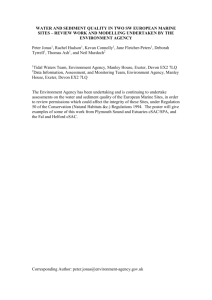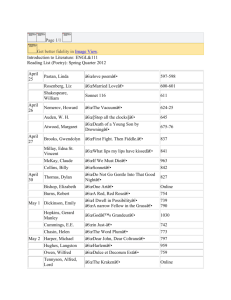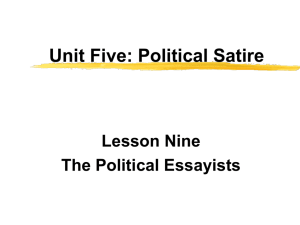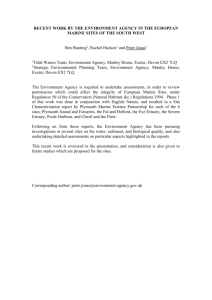Values Clarification: a tool for developing a common vision
advertisement
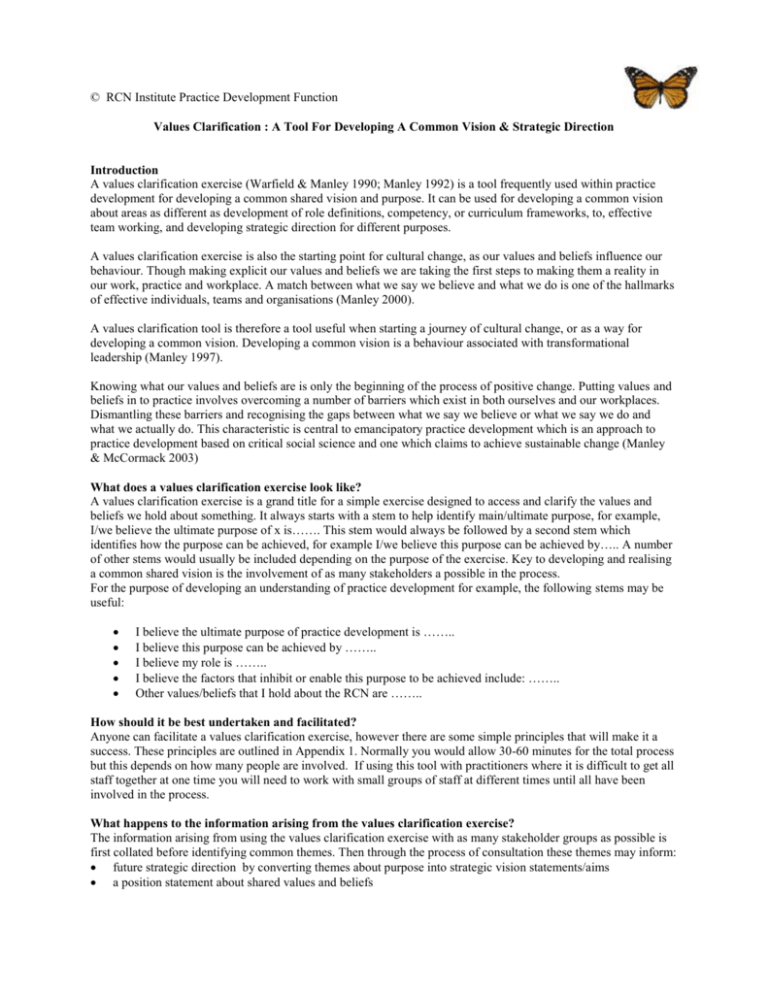
© RCN Institute Practice Development Function Values Clarification : A Tool For Developing A Common Vision & Strategic Direction Introduction A values clarification exercise (Warfield & Manley 1990; Manley 1992) is a tool frequently used within practice development for developing a common shared vision and purpose. It can be used for developing a common vision about areas as different as development of role definitions, competency, or curriculum frameworks, to, effective team working, and developing strategic direction for different purposes. A values clarification exercise is also the starting point for cultural change, as our values and beliefs influence our behaviour. Though making explicit our values and beliefs we are taking the first steps to making them a reality in our work, practice and workplace. A match between what we say we believe and what we do is one of the hallmarks of effective individuals, teams and organisations (Manley 2000). A values clarification tool is therefore a tool useful when starting a journey of cultural change, or as a way for developing a common vision. Developing a common vision is a behaviour associated with transformational leadership (Manley 1997). Knowing what our values and beliefs are is only the beginning of the process of positive change. Putting values and beliefs in to practice involves overcoming a number of barriers which exist in both ourselves and our workplaces. Dismantling these barriers and recognising the gaps between what we say we believe or what we say we do and what we actually do. This characteristic is central to emancipatory practice development which is an approach to practice development based on critical social science and one which claims to achieve sustainable change (Manley & McCormack 2003) What does a values clarification exercise look like? A values clarification exercise is a grand title for a simple exercise designed to access and clarify the values and beliefs we hold about something. It always starts with a stem to help identify main/ultimate purpose, for example, I/we believe the ultimate purpose of x is……. This stem would always be followed by a second stem which identifies how the purpose can be achieved, for example I/we believe this purpose can be achieved by….. A number of other stems would usually be included depending on the purpose of the exercise. Key to developing and realising a common shared vision is the involvement of as many stakeholders a possible in the process. For the purpose of developing an understanding of practice development for example, the following stems may be useful: I believe the ultimate purpose of practice development is …….. I believe this purpose can be achieved by …….. I believe my role is …….. I believe the factors that inhibit or enable this purpose to be achieved include: …….. Other values/beliefs that I hold about the RCN are …….. How should it be best undertaken and facilitated? Anyone can facilitate a values clarification exercise, however there are some simple principles that will make it a success. These principles are outlined in Appendix 1. Normally you would allow 30-60 minutes for the total process but this depends on how many people are involved. If using this tool with practitioners where it is difficult to get all staff together at one time you will need to work with small groups of staff at different times until all have been involved in the process. What happens to the information arising from the values clarification exercise? The information arising from using the values clarification exercise with as many stakeholder groups as possible is first collated before identifying common themes. Then through the process of consultation these themes may inform: future strategic direction by converting themes about purpose into strategic vision statements/aims a position statement about shared values and beliefs © RCN Institute Practice Development Function the way work is organised so that it reflects the values held the structures and processes necessary to enable the strategy to become a reality. a curriculum or research framework the critique of practice at an individual/team level to establish the gaps between the values spoken about and the values experienced References Manley K (2000) Organisational culture and consultant nurse outcomes: part 1 organisational culture Manley K (1992) Quality Assurance: The Pathway To Excellence In Nursing (Chapter 7) In Bryzinska G & Jolley M (Eds) Nursing Care: the challenge to change. Edward Arnold London Manley K (1997) A Conceptual Framework for Advanced Practice: An action research project operationalising: An Advanced Practitioner/Consultant Nurse Role Journal of Clinical Nursing 6(3) 179-190 Manley K; McCormack B (2003) Practice development: purpose, methodology, facilitation and evaluation. Nuring in Critical Care (8)1 22-29 Warfield C; Manley K (1990) Developing a new philosophy in the NDU Nursing Standard 4(41) 27-30 Kim Manley August 2002 (v2) © RCN Institute Practice Development Function Appendix 1 Principles Guiding the Facilitation of A Values Clarification Exercise Principle 1:Enabling contributions and valuing them. The actual exercise is best undertaken in small buzz groups- ideally with no more or less than 4 people. This is because small group participation enables everyone to say something and also a greater breadth of ideas and clarity from sharing results. This is preferable to the individual undertaking the exercise on their own as it is from the mutual sharing of ideas that a common vision develops. If there are many wishing to participate in this exercise at one time, then several buzz groups would need to be established and some time will need to be allocated for feeding back. Principle 2: Capturing Common Ground. One person in each buzz group may document the ideas coming out from their group or each person within the buzz group may document each of their ideas on a ‘post-it’. Use of ‘Post-its’ enables easier theming later through the moving about the ‘post-it’ notes. The ideas emerging form the buzz group are the shared beliefs and values - those that everyone can sign up to in spirit even though the language may need further work.. It is more important to capture key ideas, words and the spirit of these, rather than detailing specific sentences. It is important that group members use `I' when making contributions to their group, thus encouraging participants to own their own values and beliefs. There is always a temptation to state what text books/documents state or use jargon. To minimise this the role of each group member is to help each other to explain what they mean, use simple language and take ownership of their values and beliefs, yet enabling everyone to contribute. Principle 3:Managing Disagreement. The purpose of the exercise is to identify common values and beliefs - things we can all sign up to rather than those we can’t. If there is fundamental disagreement on any areas (this is rare usually) then this could stop the exercise from being completed. Therefore a strategy for handling this is to highlight where the disagreement is rather than have a major discussion about it at this stage. Such areas will need to therefore be noted and explored in more depth by the organisation at a later date. Spending time on exploring different understandings at a later point will be important as often a deeper understanding results from different perspectives. Principle 4: Time for the exercise. If one group of 4 people were undertaking this exercise, then the minimum time required is 30 minutes. It will be important that all the stems have been explored and that if groups get stuck on one item they proceed to the other items and return later to the one causing difficulty. One piece of paper with key word and ideas would result that reflect the shared values and beliefs of the four people in the group (with any areas of disagreement highlighted). This then will be combined with other contributions before it can be themed If several groups of four are undertaking this exercise then further time will be required for feedback. However by enabling participants to theme the material themselves greater ownership and also critique results. The length of time involved will depend on how many post-its you have and also how people work together.. Kim Manley November 2003




